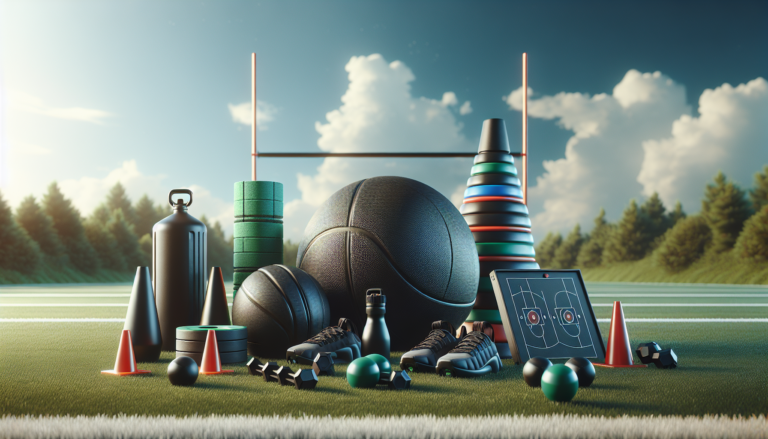Introduction to Throwing Drills
Throwing drills are essential exercises for any baseball or softball player looking to improve their throwing skills. By focusing on specific techniques and repetitions, players can develop muscle memory and build a strong foundation for accurate, powerful throws. These drills are especially important for youth baseball players who are still learning the fundamentals of the game.
Why Throwing Drills are Important
Throwing drills serve several key purposes for baseball and softball players:
- They help players develop proper throwing mechanics, including grip, arm action, and follow-through
- They build arm strength and endurance, allowing players to make stronger, more accurate throws
- They improve overall athleticism, coordination, and body control
- They teach players to throw from various arm angles and body positions
By incorporating throwing drills into regular practice routines, players can see significant improvements in their throwing abilities over time.
Who Can Benefit from Throwing Drills
Throwing drills are beneficial for baseball and softball players of all ages and skill levels, but they are particularly important for youth baseball players who are still developing their fundamentals.
Coaches and parents can use throwing drills to teach young players proper techniques from an early age. This helps prevent bad habits from forming and sets players up for long-term success.
Softball drills that focus on throwing are also crucial for young players. While the throwing motion is slightly different in softball, the same principles of proper mechanics and repetition apply.
Ultimately, any player who wants to improve their throwing skills can benefit from incorporating specific drills into their training regimen. With the guidance of knowledgeable baseball coaching, these drills can make a significant impact on a player’s performance.
Basic Throwing Drills for Beginners
When first introducing throwing drills to youth baseball players, it’s important to start with basic exercises that emphasize proper form and technique. These drills may seem simple, but they lay the groundwork for more advanced skills down the line.
Here are a few fundamental throwing drills that are perfect for beginners:
Flipping Ball Drill
The flipping ball drill is a great way to teach young players how to grip and release the baseball properly. Here’s how it works:
- Player starts with ball in throwing hand, elbow bent at 90-degree angle
- Player rotates wrist back and then quickly flips ball up, releasing it off index and middle fingers
- Focus is on wrist action and keeping arm relaxed, not on throwing the ball a specific distance
- Repeat for 10-15 reps
This simple drill isolates the wrist action and helps players develop a feel for proper ball release. It’s a building block for more advanced throwing techniques.
Figure 8 with Throw Drill
The figure 8 with throw drill helps players maintain balance and control throughout their throwing motion. Here’s how to do it:
- Player starts with ball in throwing hand, feet shoulder-width apart
- Player traces figure 8 patterns with the ball in front of body
- After a few figure 8s, player pulls ball back into throwing position and makes a throw to a partner or target
- Focus is on fluid motion and keeping body balanced
- Repeat for 8-10 reps
This drill combines a rhythmic figure 8 motion with proper throwing mechanics. It’s great for developing coordination and body control.
Throwing from Knees Drill
Throwing from the knees is a drill that takes the legs out of the equation and isolates the upper body mechanics. Here’s how it’s done:
- Player kneels on throwing-side knee with opposite leg out in front, foot flat on ground
- Player gets into arm cocking position with ball pulled back and front shoulder pointed at target
- Player rotates chest toward target and makes throw, focusing on a strong arm action
- Repeat for 10-15 reps
This drill is excellent for developing arm strength and reinforcing upper body throwing techniques. It’s used at all levels of youth baseball.
Advanced Throwing Drills for Skill Enhancement
Once players have mastered the basic throwing drills, they can move on to more advanced exercises that further refine their mechanics and improve throwing skills. These drills incorporate more complex movements and often focus on building specific aspects like power or accuracy.
Standing Power Position Drill
The standing power position drill emphasizes the importance of lower body in generating throwing power. Here’s how to do it:
- Player stands with feet slightly wider than shoulder-width, toes pointed straight ahead
- Player shifts weight back, bending rear leg and keeping front leg relatively straight
- Player rotates hips and chest toward target, using lower body drive to initiate throw
- Focus is on leading with lower half, not rushing upper body
- Repeat for 10-15 throws, concentrating on power generated by legs and core
When done correctly, players should feel their weight shift and chest open up as they make a powerful throw using their whole body, not just their arm. It’s a key throwing drill for building velocity.
Tempo Arms Swing Drill
The tempo arms swing drill helps players find the right rhythm and sequencing in their throwing motion. The steps are:
- Player starts with feet shoulder-width apart, ball in throwing hand
- Player does a series of arm swings with increasing speed:
- 4 slow arm swings back and forth
- 3 faster arm swings back and forth
- 2 even faster arm swings back and forth
- 1 game-speed arm throw to partner or target
- After completing 4-3-2-1 progression, player immediately does another throwing rep
- Focus is on smooth sequencing and letting arm gradually accelerate to throw
- Repeat for 6-8 total reps, keeping rhythm consistent each time
This is a great drill for ironing out any hitches or pauses in a player’s throwing mechanics. The gradual build-up of arm speed teaches the body to move efficiently from start to release.
Boxers Drill
The boxers drill helps players learn to throw accurately while maintaining balance and posture. Here’s how to perform it:
- Player starts in standing power position drill stance, ball in throwing hand
- Player uses non-throwing hand to “box” an imaginary target where they intend to throw
- Player then shifts upper body, pulls throwing arm back, and makes a firm throw at the target they just boxed
- Focus is on using the off-hand as an aiming guide and keeping stable lower body positioning
- Repeat for 10-15 reps, alternating targets each time
This multi-purpose drill combines elements of lower body stability, visual focus, and throwing accuracy. It translates well to game situations where players must make strong, on-target throws without losing their mechanics.
Specialized Throwing Drills for Specific Situations
In addition to the general throwing drills outlined above, there are also specialized throwing drills designed to prepare players for specific in-game scenarios. These are often position-specific or focused on certain types of throws that players need to master.
Here are a few examples of situation-based baseball drills:
Throw on the Run Drill
Outfielders in particular need to be able to make strong throws while on the move. The throw on the run drill helps them practice this essential skill:
- Player starts at one end of the outfield while coach stands near home plate
- Coach tosses a ball to player, who fields it and immediately starts running across the outfield
- As player approaches the middle of outfield, they set feet and make a crow hop throw toward coach or cutoff man
- Focus is on gaining ground with crow hop and using momentum to increase throw velocity
- Repeat for 5-6 reps in each direction
This is one of the best throwing drills for outfielders, as it simulates the game action of catching a ball in the gap and quickly relaying it back to the infield. Infielders can also benefit from this drill when turning double plays.
Field to Power to Relay Drill
The field to power to relay drill trains infielders to smoothly transition from fielding a ground ball to setting up for a strong relay throw. Here are the steps:
- Player starts at shortstop position, coach hits a firm ground ball to their left
- Player fields the ball while simultaneously stepping into power position, aligning feet and shoulders
- Player then makes an accurate relay throw to first or another infield base, depending on scenario
- Focus is on speed of transition from catch to throw and making strong, on-target relay
- Repeat for 8-10 reps, alternating ground balls to forehand and backhand sides
This drill helps infielders maintain good throwing mechanics even when they don’t have much time to get set before their throw. It’s a staple of middle infielder baseball coaching.
Back Up to Long Toss Drill
Long toss is a throwing drill that builds arm strength and endurance. The back up to long toss drill makes this process more structured and purposeful:
- Players pair up and start about 15 feet apart, making firm throws back and forth
- After every 4-5 throws, partners each take 3 steps back and continue throwing sequence
- This process repeats until players are throwing from a significant distance (often 100+ feet depending on age/skill level)
- Once at peak distance, players take 3 steps in after every 4-5 throws until back to original distance
- Focus is on maintaining good throwing mechanics and gradually building up to long distance throws
Long toss is used by players at all levels to improve throwing power and overall arm fitness. The back up to long toss drill provides a framework for getting the most out of a long toss session.
Tips for Effective Throwing Drills
To get the most benefit from the throwing drills described above, players should keep these tips in mind:
Emphasizing Proper Grip and Release
Developing a proper grip is essential for throwing consistency and accuracy. Players should grip the ball with fingers, not palm, and keep a loose, relaxed hold.
Similarly, the release of the ball off the fingertips is key to imparting good rotation and achieving a strong follow-through. Drills like the flipping ball drill reinforce these fundamentals.
Maintaining Balance and Weight Shift
Proper balance and weight shift are critical components of an effective throwing motion. Players should start with a slight lean back, transfer weight forward with rear leg drive, and finish with chest square to target.
Drills like the figure 8 and standing power position drill help ingrain these movements until they become second nature.
Follow-Through and Accuracy
The throwing motion isn’t complete until the arm has fully followed through and the player’s chest is facing the target. Stopping the arm early can lead to weak, erratic throws.
In addition to follow-through, players should aim small to miss small. Pick a precise target – whether it’s a coach’s glove or a small object on a fence – and try to hit it consistently. This improves overall throwing accuracy.
Conclusion: Mastering Throwing Drills
Throwing drills are a crucial part of any baseball or softball player’s training regimen. By developing proper mechanics and practicing them regularly, players can take their throwing skills to new heights.
Recap of Key Points
To summarize, some of the most important elements of effective throwing drills include:
- Focusing on proper grip, arm action, and release
- Maintaining balance and control throughout the throwing motion
- Generating power with the legs and core, not just the arm
- Practicing throws from various angles and body positions
- Emphasizing accuracy by aiming at small, precise targets
By incorporating these principles into their throwing sessions, players can improve throwing skills rapidly.
Encouragement for Continuous Practice
Throwing drills aren’t a one-and-done proposition. To see sustained improvement, players must make them a regular part of their practice routine.
For youth baseball players in particular, consistent repetitions are key to developing muscle memory and instinctive throwing mechanics. Coaches and parents should encourage young athletes to practice their throwing often, even outside of formal team activities.
With dedication and continuous practice, any player can master the art of throwing and take their game to the next level. Equipped with the drills and tips in this guide, you have the tools to start building an elite throwing arm today.





